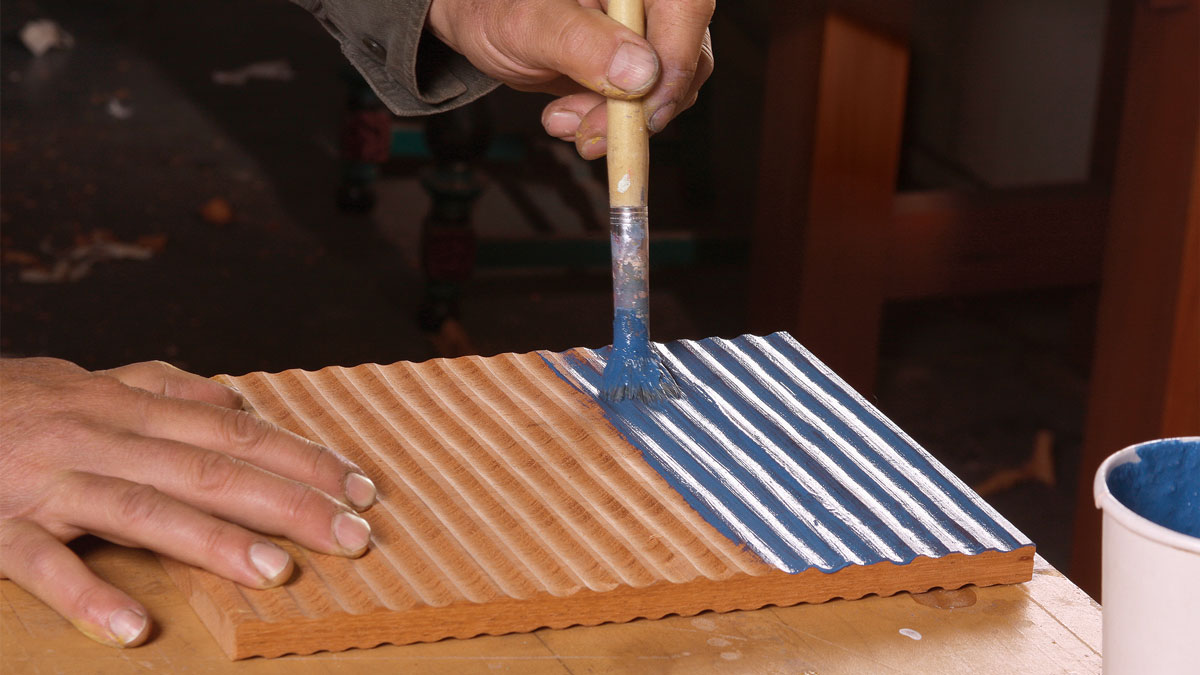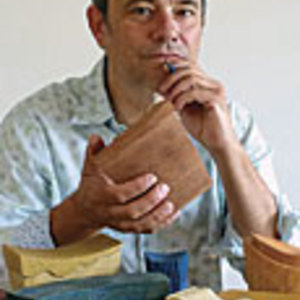Accentuate Carving with Color
Creative use of milk paint gives textured surfaces a new dimension.

Synopsis: Carver Michael Cullen uses milk paint to give the textured surfaces of his furniture new dimensions and patterns. Learn how he uses the paint, burnishing, and topcoats to highlight the different surfaces of his carved pieces, from a simple burnished look to a two- or three-toned mottled look.
The majority of my carving ends up under several coats of milk paint. This may seem strange to woodworkers used to “bringing out the natural beauty of the wood,” but adding color to a carving is one of best ways to highlight the design and to define the pattern.
Because wood grain is a pattern in itself, there is always the potential for it either to compete with the carved pattern or to wholly overwhelm it. What I like best about milk paint is how it combines with the wood to form more of a patina than an opaque coating. It doesn’t obliterate the grain; it merely tones it down so that the carved pattern can take center stage.
In addition, the paint and my method of burnishing the high points add a sense of depth to the carving, creating subtle highlights in the piece with the changes of hue between the surface and background.

Several coats of one color and a clear topcoat: Make sure the carving is free of dust and that any non-carved surface due to be painted is well-prepped. The paint tends to highlight imperfections, so remove any machine marks. I buy my paint from The Old Fashioned Milk Paint Company (milkpaint.com). The color selection, inspired by colonial New England, is excellent and foolproof. It’s virtually impossible to create a bad combination.
Use inexpensive brushes because the lime in the paint is hard on bristles.
Begin applying the paint in line with the carving, in this case along the grooves of the ripple pattern, making sure the paint is getting down into the grain and that there are no missed spots.
The trick with milk paint is to always maintain a wet edge. If you add wet paint next to dry, the colors will not match, leaving evidence of where you stopped and resumed painting.
 from Fine Woodworking #221
from Fine Woodworking #221
For the full article, download the PDF below:
Fine Woodworking Recommended Products

Foam Brushes

Odie's Oil

Waterlox Original








Log in or create an account to post a comment.
Sign up Log in